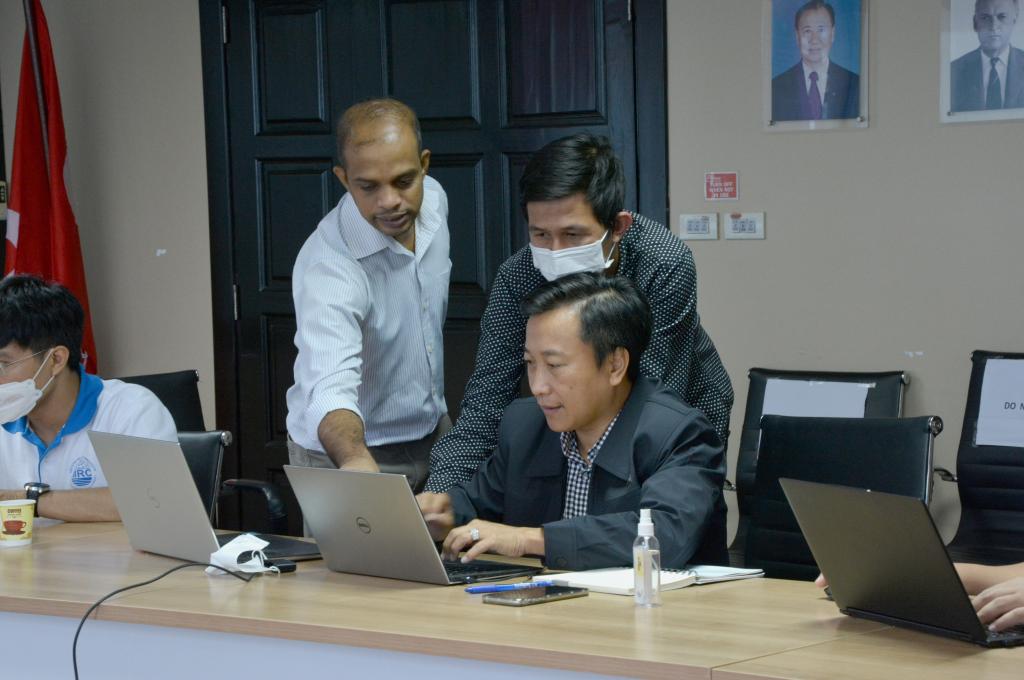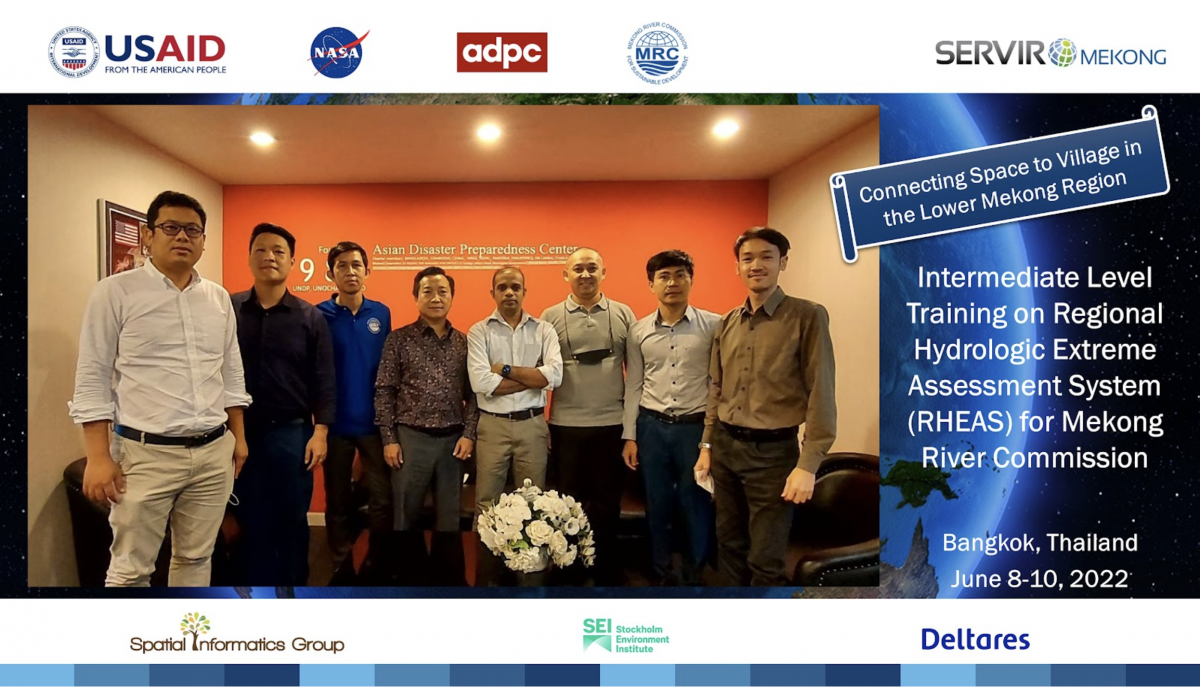SERVIR-Mekong Bolsters the Mekong River Commission to Prepare for Droughts and Improve Food Security Across the Lower Mekong

Droughts in the Lower Mekong region negatively impact ecosystem services, biodiversity, food and water security, and are exacerbated by climate change. The Mekong River Commission (MRC) adopted SERVIR-Mekong’s satellite data and decision support tools to implement its Drought Management Strategy (2020 - 2025) and better prepare for future droughts and food insecurity.
From June 8 to 10, 2022 SERVIR-Mekong conducted a three-day training-of-trainers sessions for officers of the MRC on the application of satellite data for drought forecasting and estimating its impacts on rice yields. Six participants, identified as future trainers, agreed to help sustain this capacity and train other MRC staff to monitor, analyze, and accurately forecast future droughts; and improve future management decisions related to food security and water resources in the Mekong Delta. As a result, farmers will have advanced information to mitigate the impact of droughts on their crops and policy makers will have better data and tools to develop and implement drought prevention and mitigation strategies.
“Through this training, participants have fully captured the Regional Drought and Crop Yield Information System (RHEAS) model structure and operation system. So, MRC might be able to run the forecast by themselves in the future.” Says Mr. Ix Hour, Technical Expert on Drought Management & Mitigation at MRC. “However, continued support from both USAID and NASA are still important and necessary as the system needs to be customized with updated parameters provided by MRC and different precipitation data with better accuracy might be needed.”

SERVIR-Mekong is a unique partnership between the U.S. Agency for International Development (USAID) and the U.S. National Aeronautics and Space Administration (NASA). Implemented by the Asian Disaster Preparedness Center (ADPC).
Rice, also referred to as “white gold” by farmers in the region, is central to the socio-cultural fabric and economic prosperity of lower Mekong countries. The region produces over 50 million tonnes of paddy rice each year and contributes to a quarter of the world’s rice exports.
According to a recent assessment by McKinsey Global Institute, countries of the Lower Mekong Basin will witness an increased probability of a yield change (increase or decrease) of more than 10 percent in the production of rice by 2050. Since this region produces about 26 percent of Asia’s rice and 10 percent of its corn, this could have a significant impact on price volatility.



